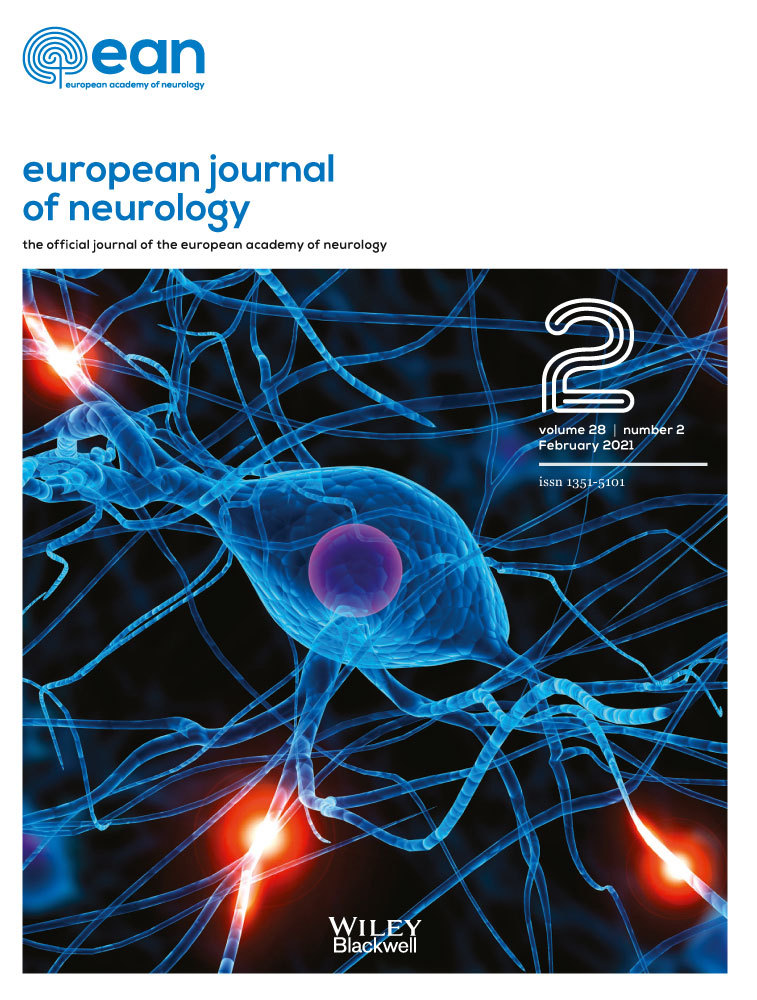Neurofilament results for the phase II neuroprotection study of phenytoin in optic neuritis
Abstract
Background
A randomized trial of phenytoin in acute optic neuritis (ON) demonstrated a 30% reduction in retinal nerve fiber layer (RNFL) loss with phenytoin versus placebo. Here we present the corresponding serum neurofilament analyses.
Methods
Eighty-six acute ON cases were randomized to receive phenytoin (4–6 mg/kg/day) or placebo for 3 months, and followed up for 6 months. Serum was collected at baseline, 3 and 6 months for analysis of neurofilament heavy chain (NfH) and neurofilament light chain (NfL).
Results
Sixty-four patients had blood sampling. Of these, 58 and 56 were available at 3 months, and 55 and 54 were available at 6 months for NfH and NfL, respectively. There was no significant correlation between serum NfH and NfL at the time points tested. For NfH, the difference in mean placebo – phenytoin was −44 pg/ml at 3 months (P = 0.019) and −27 pg/ml at 6 months (P = 0.234). For NfL, the difference was 1.4 pg/ml at 3 months (P = 0.726) and −1.6 pg/ml at 6 months (P = 0.766).
Conclusions
At 3 months, there was a reduction in NfH, but not NFL, in the phenytoin versus placebo group, while differences at 6 months were not statistically significant. This suggests a potential neuroprotective role for phenytoin in acute ON, with the lower NfH at 3 months, when levels secondary to degeneration of the anterior visual pathway are still elevated, but not at 6 months, when levels have normalized.
Disclosure of conflicts of interest
RR has nothing to disclose. JK received speaker fees, research support, travel support and/or served on advisory boards by ECTRIMS, Swiss MS Society, Swiss National Research Foundation (320030_160221), University of Basel, Bayer, Celgene, Biogen, Merck, Novartis, Roche, Sanofi and Teva. DG has nothing to disclose. SJH has nothing to disclose. DA has nothing to disclose. DL has received travel support and/or lecture honoraria from Novartis, Roche, Sanofi, Orion and GeNeuro. KB has served as a consultant or advisory boards for Abcam, Axon, Biogen, Lilly, MagQu, Novartis and Roche Diagnostics, and is a co-founder of Brain Biomarker Solutions in Gothenburg AB, a GU Ventures-based platform company at the University of Gothenburg (outside submitted work). HZ has served on scientific advisory boards for Samumed, Roche Diagnostics, Wave and CogRx, has given lectures at symposia sponsored by Alzecure and Biogen, and is a co-founder of Brain Biomarker Solutions in Gothenburg AB, a GU Ventures-based platform company at the University of Gothenburg (outside submitted work). RK has support from the UK National Institute of Health Research, UCLH Biomedical Research Centre. GG in the last 5 years has received compensation for serving as a consultant or speaker for, or has received research support, from: AbbVie, Actelion, Atara Bio, Biogen, Canbex, Celgene, Sanofi-Genzyme, Genentech, GlaxoSmithKline, Merck-Serono, Novartis, Roche, Synthon BV and Teva. SG has received honoraria, speaker fees or travel support from Biogen Idec, Genzyme, Novartis, Merck, Roche, Teva, MS Research Australia, Neurodiem, NMSS and ECTRIMS. Research grant support from Genzyme, Merck, Takeda and UK MS Society.
Open Research
Data availability statement
Data that have been made anonymous can be shared by request from qualified investigators.




